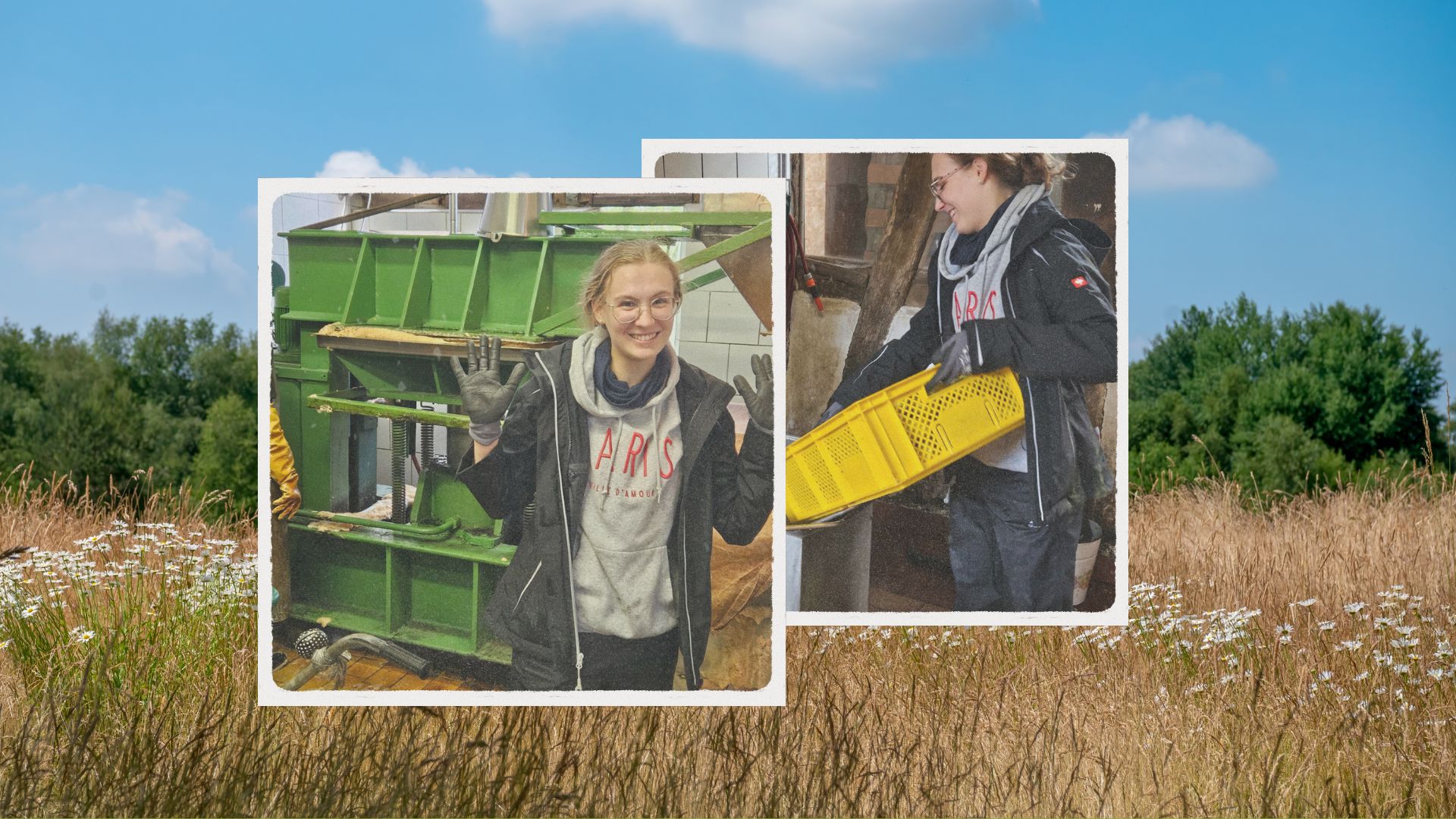One year of ecological service at the golf club
Friederike Schäring’s job is unusual – she is doing a voluntary ecological year at Achimer Golf Club. Club manager Thomas Schmidt thinks it’s “great”. “It’s really fun and I would do it again in a heartbeat,” is the high school graduate’s positive assessment. For one year, the club in Lower Saxony will use her exclusively for projects “that we don’t normally have so much time for, because nature often runs on the side,” Schmidt explains. At Achimer Golf Club, which has been awarded with Gold in the German Golf & Nature certification system, ecology is a top priority. The projects vary, so the new employee is constantly working to capacity.
From the orchard harvest to the harvest cairn
She started with the harvest in the orchard. “There were two large areas and then I had to have the apple juice made.” Then, it was time to look after the renaturalized heathland. Although the men’s and women’s teams at the Achimer Golf Club also take care of clearing the areas of weeds, “I did a really good job of it,” says Schäring with satisfaction. Together with the local branch of the NABU, she has been responsible for cleaning the nesting boxes over the past few months, and the next annual project is the construction of a pile of reading stones. She finds plenty of projects relating to ecology on the golf course.
Subscribe to our newsletter!
News & trends about sustainability in golf
The combination of the Voluntary Ecological Year and the sport of golf is rather unusual. Thomas Schmidt, however, has already taken it up in 2023. His assessment is very positive. The financial burden for the club is manageable and amounts to around 450 euros per month. The school leavers were motivated in both cases and the cooperation with the other employees in the team was good.
Alternative to the Voluntary Social Year
Friederike Schäring found out about the Voluntary Ecological Year, which is organized a little differently in each German state, through friends. “That appealed to me more than the social year because I thought that would suit me a little better and I could contribute my ideas and knowledge better,” is her analysis. The reaction of her friends, most of whom are not golfers, was initially a little sceptical. Golf and ecology, do they go together? “But actually, as soon as you’re on the golf course, it’s quite clear that only the symbiosis of sport and nature works here,” she explained to them.
Schäring herself has been on golf courses since she was a child. Her father is a professional golfer, and she plays golf herself. But actually, she is much more interested in nature than sport now. For her, as for Thomas Schmidt, the Voluntary Ecological Year is a win-win situation. The young employee spends four weeks a year at seminars and has 26 days of vacation. According to Schmidt, this is all manageable. The Achimer GC benefits from the fact that the young woman is constantly dealing with the topic of nature. Schäring herself appreciates the fact that she can work relatively independently at the golf club. Her voluntary ecological year comes to an end in summer 2025. However, the Achimer GC will probably continue to rely on motivated school leavers who want to work for nature on the golf course in the future.







